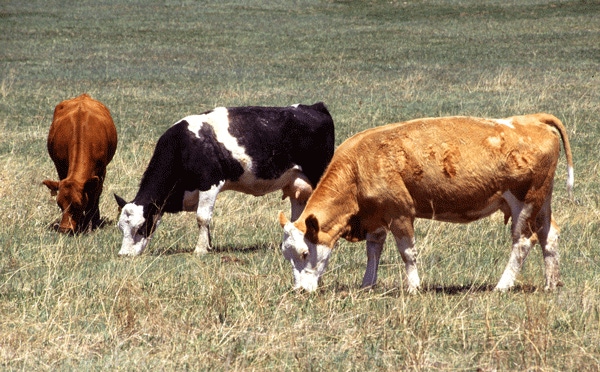June 3, 2011

With only 33 percent of the state receiving adequate rainfall, Alabama farmers are beginning to suffer as the hot summer months approach.
Most consider the affects drought has on crops, but the livestock industry is also alarmed at the scarcity of rain.
“With average annual rainfalls below normal, our members who raise livestock are feeling the effects of drought as much as anyone,” said Nathan Jaeger, director of the Alabama Farmers Federation’s Beef, Equine, Hay and Forage divisions.
“It is especially difficult for cattle farmers because they do not normally rely on outside assistance during hard times, and while there are some programs available that individuals utilize, they often are just a fraction of their expenses.”
Webb Holmes, the Perry County Farmers Federation’s beef chair and owner of the Holmestead Company, said he doesn’t know if he will be able to make it through the summer months without more rain.
“We’ve only gotten about an inch of rain in May, and we really depend on that rain because most grass grows from April to the middle of June,” Holmes said. “If we don’t get anything in June, we might be in a lot of trouble. I’m really afraid we’re not going to have enough grass to get through the summer.”
Holmes said if he doesn’t have enough grass to get through the summer, he’ll have to sell his cows or wean his calves early.
“It just depletes your stock,” Holmes said. “You have to build your numbers back up sometime, and if you sell them now for less than their potential, you probably won’t be able to maximize profits from those animals.”
Jaeger said that although farmers may have to sell their cattle, they will still be able to stay afloat — for now.
“The only silver lining in this emerging dust cloud is that at the moment cattle prices are very high, so farmers will receive premiums for what cattle they can sell,” Jaeger said. “But these high prices are directly related to drought from three years ago that forced many cattle and livestock farmers to liquidate much of their herds.”
Although Holmes is anxious about the state of his operation, he said he is still hopeful enough rain will fall in June and July to get him through the summer.
“We’re always optimistic,” Holmes said, “or we’d be in another business.”
You May Also Like




